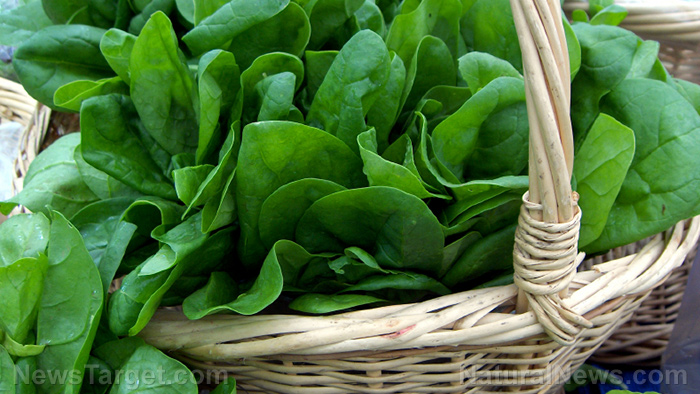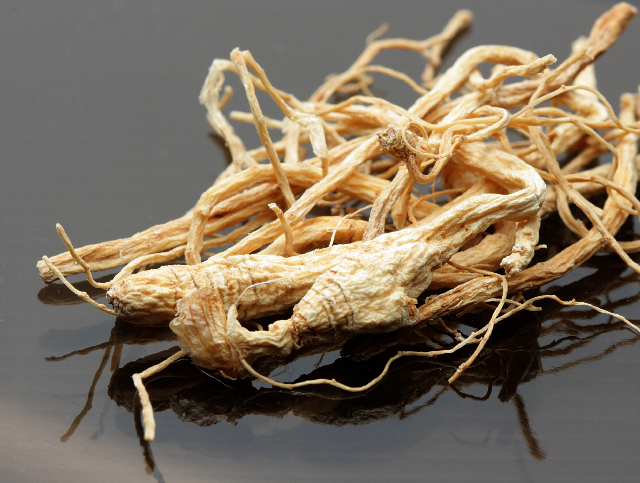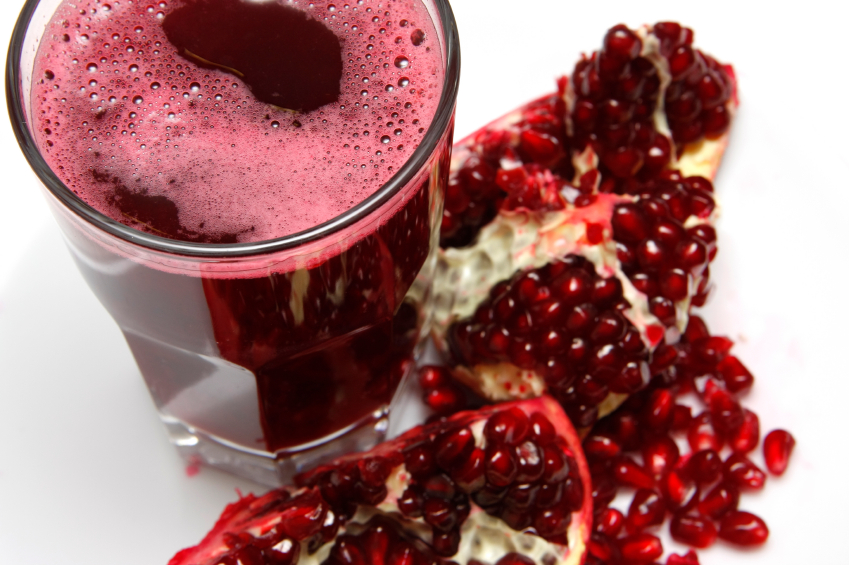
- Spinach (Spinacia oleracea) originated in ancient Persia (modern-day Iran) around the 4th century CE, spreading to China, Europe and eventually North America. It became a culinary staple in Mediterranean cuisine and gained popularity in the 20th century, partly due to its association with Popeye the Sailor.
- Spinach is rich in phytonutrients (flavonoids, carotenoids and chlorophyll), vitamins (A, C and K) and minerals (iron, magnesium, folate). Its antioxidants and anti-inflammatory properties help combat chronic diseases, support heart health, improve eye health and aid in diabetes management and cognitive function.
- Spinach's nutrients contribute to cardiovascular health by lowering blood pressure, protecting vision through lutein and zeaxanthin, strengthening bones with vitamin K and calcium, and regulating blood sugar levels with magnesium. It also supports digestive health and weight management due to its high fiber and low-calorie content.
- Spinach can be consumed raw or cooked – with a mild, slightly sweet flavor when raw and a more earthy taste when cooked. It is a key ingredient in diverse global cuisines, featured in dishes like stuffed chicken, quiches, smoothies and sautéed sides.
- Spinach has been used in traditional medicine for centuries, treating ailments like anemia and inflammation. Its adaptability and universal appeal are reflected in its various names (e.g., palak in Hindi, bocai in Chinese) and its role in modern wellness practices, such as detoxifying smoothies and nutrient-packed meals.
A brief history of spinach
Spinach's origins trace back to ancient Persia (modern-day Iran), where it was cultivated as early as the 4th century CE. It later spread to China, where it was referred to as the "Persian vegetable," and eventually made its way to Europe in the 12th century via Spain. By the Renaissance, spinach had become a popular ingredient in Mediterranean cuisine – particularly in Italy, where it was used in dishes like ravioli and lasagna. Its introduction to North America came with European settlers in the 19th century. It has since become a household name in the 20th century, thanks in part to its association with the cartoon character Popeye the Sailor, who famously gained strength from eating spinach. (Related: Spinach: An easy and delicious way to reduce your risk of heart disease.) Spinach's rise to superfood status began in the 20th century, as scientific research uncovered its dense concentration of vitamins, minerals and phytonutrients. Its ability to thrive in diverse climates – from temperate regions to subtropical zones – has made it a globally accessible vegetable, grown in countries such as the U.S., China and India.Nutritional powerhouse: Phytonutrients and health benefits
Spinach is a treasure trove of phytonutrients, bioactive compounds that play a crucial role in preventing and reversing chronic diseases. Among its most notable phytonutrients are flavonoids (such as kaempferol and quercetin), carotenoids (including lutein and zeaxanthin) and chlorophyll. These compounds exhibit antioxidant, anti-inflammatory and anti-cancer properties, making spinach a formidable ally in the fight against oxidative stress and cellular damage. The vegetable is also rich in essential vitamins and minerals, including vitamin A, vitamin C, vitamin K, folate, iron and magnesium. Its high fiber content supports digestive health, while its low calorie count makes it an ideal choice for weight management. Research suggests that spinach can help prevent or alleviate a range of conditions, including:- Cardiovascular disease: The nitrates in spinach help lower blood pressure, while its antioxidants reduce inflammation and improve arterial health.
- Eye health: Lutein and zeaxanthin protect against age-related macular degeneration and cataracts.
- Bone health: Vitamin K and calcium contribute to bone density and reduce the risk of osteoporosis.
- Diabetes management: Spinach's magnesium content helps regulate blood sugar levels.
- Cognitive decline: Folate and antioxidants may slow age-related cognitive decline and improve brain function.
Spinach as a healing food
Spinach's healing properties have been harnessed in various ways across cultures. In traditional medicine, it has been used to treat ailments such as anemia (due to its iron content) and inflammation, thanks to its anti-inflammatory compounds. Modern wellness practices often incorporate spinach into detoxifying green smoothies, nutrient-packed salads and restorative soups. One anecdote from the annals of history highlights spinach's reputation as a healing food. During the Middle Ages, Arab physicians prescribed spinach to patients suffering from digestive disorders, recognizing its ability to soothe the stomach and promote regularity. This early recognition of spinach's medicinal value laid the groundwork for its enduring legacy as a health-promoting vegetable. Spinach leaves are typically dark green, with a smooth or slightly crinkled texture, depending on the variety. The shape ranges from oval to arrowhead-like and the taste can vary significantly based on how it is prepared. Raw spinach has a mild, slightly sweet flavor, while cooked spinach tends to be more earthy and robust. The high oxalate content, which can be reduced by steaming, gives spinach a slightly bitter undertone when consumed in large quantities. Spinach is known by various names across the globe, reflecting its widespread cultivation and cultural significance. In Hindi, it is called palak; in Chinese, bocai; and in Spanish, espinaca. These names underscore its universal appeal and adaptability in diverse culinary traditions.Recipes featuring spinach
Spinach's versatility makes it a star ingredient in countless recipes. Here are a few creative ways to incorporate this superfood into your diet:- Spinach and feta stuffed chicken breast: A Mediterranean-inspired dish featuring tender chicken breasts filled with a mixture of sautéed spinach, feta cheese and garlic.
- Creamy spinach and artichoke dip: A crowd-pleasing appetizer blending spinach, artichokes and a creamy cheese base, perfect for dipping with crusty bread or vegetables.
- Spinach and berry smoothie: A refreshing blend of fresh spinach, mixed berries, banana and almond milk, ideal for a nutrient-packed breakfast or snack.
- Spinach and mushroom quiche: A savory pie filled with a custard-like mixture of eggs, cream, sautéed spinach and mushrooms, baked to golden perfection.
- Garlic sautéed spinach: A simple yet flavorful side dish featuring fresh spinach leaves sautéed with garlic, olive oil and a pinch of red pepper flakes.
More related stories:
The epic journey of sauteed spinach with garlic, a nutritious holiday side dish. Here are several reasons to include spinach in your daily diet. Spinach extract can naturally reduce appetite & food cravings. Sources include: Brighteon.ai NaturalNews.com Brighteon.comThe power of Ginseng: A timeless medicinal root for vitality and healing
By Ava Grace // Share
The science behind a promising autism treatment: How FOLINIC ACID may improve ASD symptoms
By Olivia Cook // Share
Revolutionize your diet with pomegranate: The miracle juice for gut health and metabolism
By Willow Tohi // Share
Could camel milk be a game-changer for autism? Science says it’s worth exploring
By Olivia Cook // Share
A handful of pecans a day could keep heart disease at bay, study finds
By Cassie B. // Share
Geopolitical consequences: Deep State's USAID chickens come home to roost
By newseditors // Share
COVID-19 scandal linked to CANCER SURGE: Billionaire researcher sounds alarm
By ljdevon // Share
Controversial “Luigi Mangione Act”: Necessary reform or political stunt?
By isabelle // Share
RFK Jr. is pushing Big Pharma ad ban – and corporate media is panicking
By sdwells // Share
Trump Administration considers raising taxes on wealthiest Americans to fund tip wage tax cut
By lauraharris // Share











